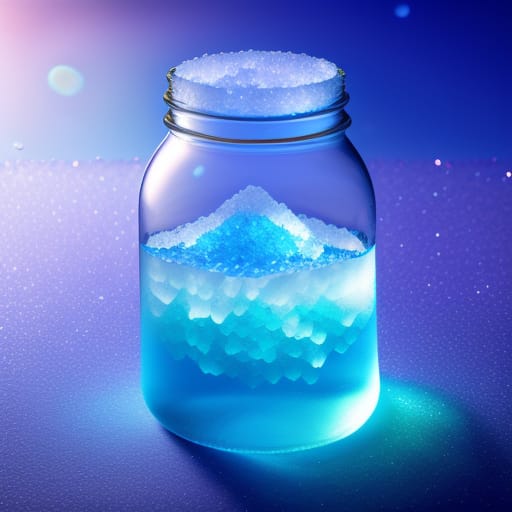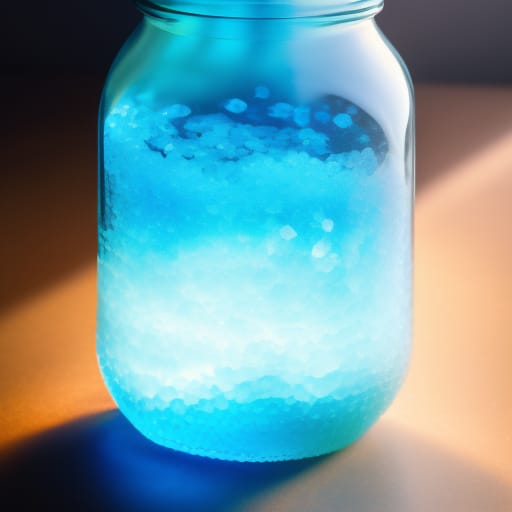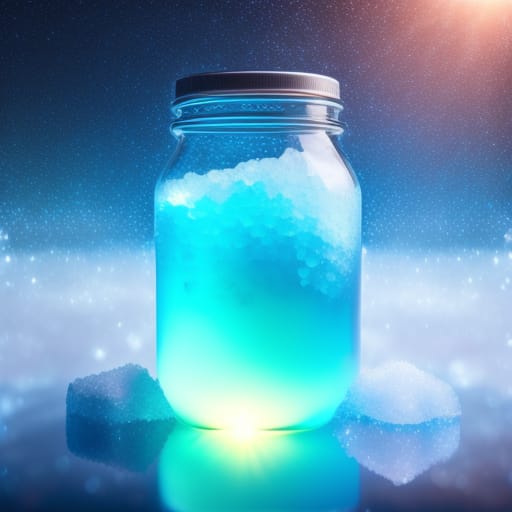Have you ever seen those stunning photos of colorful, glittering crystals? Growing your own crystals is an exciting science experiment that both kids and adults will love. While the end results are beautiful, the process does take some time and patience. In this beginner’s guide, we’ll walk through everything you need to know about the crystal growing timeline.

What is Crystal Growing?
Crystal growing involves creating a super-saturated solution and providing a seed crystal for molecules to attach to and form a larger crystal structure. This is an example of nucleation, where dissolved particles come out of solution and bond together around a starting point.
Common household materials like Epsom salt or borax are dissolved in hot water at super-high concentrations. As the solution cools and evaporates over time, the solubility decreases and molecules aggregate on the suspended seed crystal. This allows sparkling crystals to take shape on a string or pipe cleaner.
A Brief History of Crystals
Crystals have fascinated humans for centuries. Many ancient cultures prized crystals for their healing and spiritual properties. Crystals were also used in early radios and electronics.
The art of crystal growing was pioneered in the 15th century, but it wasn’t until the 1940s that we really understood the science behind crystal formation and nucleation. Today, crystal growing is a popular educational activity.
Timeline for Growing Crystals
The exact timeline for growing crystals can vary a bit based on the type of crystals, size, and other factors. But in general, here is what you can expect:
1. Preparation (30 minutes to 1 hour)
- Gather materials: beaker, hot plate, food coloring, fishing line, etc.
- Make super saturated solution by boiling water and dissolving in as much borax or other material as possible
- Prepare your seed crystal (a small crystal or granules of the substance)
2. Crystallization (5 hours to 7 days)
- Secure seed crystal to string and hang in solution
- Allow the solution to cool and sit undisturbed as crystals begin to form
- Depending on conditions, crystals may start forming in hours or take up to 1 week
3. Harvesting Crystals (1 hour)
- Carefully remove the string and crystal from the solution
- Optional: Dry crystals fully
- Admire your sparkling crystal creation!
The most time-intensive step is waiting for the crystals to grow in the solution, which can take 3-7 days on average. Warmer temperatures speed up growth, while cooler temps slow it down. Growing large crystals takes patience!

What Affects Crystal Growth Time?
Many different factors influence crystallization time:
- Concentration – More concentrated solution = faster growth
- Temperature – Warmer solutions crystallize faster
- Evaporation – Increased evaporation speeds up crystallization
- Impurities – Impure substances slow down crystal formation
- Agitation – Movement disrupts crystal structure, keeps solution still
- Seed crystals – More/larger seeds = faster crystal growth
The most important factors are concentration, temperature, and evaporation rate. Maximizing these will speed up crystal growth.
Types of Crystals to Grow
Many compounds and minerals can be crystallized at home. Some of the most common are:
- Table salt – Large cubes form within 1-2 days
- Epsom salt – Classic needle-like crystals in 3-7 days
- Borax – Sturdy crystals grow on a pipe cleaner
- Alum powder – Octahedral gems that take 1-2 weeks
- Baking soda – Requires a very concentrated solution
Epsom salt, borax, and alum tend to be the easiest and most foolproof options for beginners. Salt crystallizes quickly but the cubes are fragile. Baking soda requires a very super-saturated solution.
The Science Behind Crystal Growing
Crystallization relies on chemistry concepts like solubility, supersaturation, and nucleation:
- Solubility – How much material will dissolve in hot vs. cold water
- Supersaturation – Heating a solution beyond normal solubility
- Nucleation – Seed crystals provide starting points for molecules to attach
A super-saturated solution has more solute than it can normally hold. As it cools and evaporates, molecules are forced out of the solution and bond to the seed crystal. Fun science!
Creative Uses for Homegrown Crystals
Beyond enjoying their natural beauty, there are many fun uses for DIY crystals:
- Science fair projects
- Colorful holiday decorations
- Homemade jewelry pieces
- Creative night lights (use borax on pipe cleaner)
- Bath salt gifts packaged in jars
- Magical unicorn horns for kids (borax crystals)
- Even phone screen decorations!
Let your creative juices flow. The possibilities with these sparkly crystals are endless.

Tips for Growing Quality Crystals
Follow these tips for growing large, visually stunning crystals:
- Use very hot water and maximum solute for the fastest growth
- Maintain constant temperature in a warm water bath
- Increase air circulation to allow faster evaporation
- Filter solutions for purity
- Use nylon thread or fishing line to suspend crystals
- Keep the area vibration-free while crystals grow
- Be extremely patient – large crystals can take weeks!
- Admire your crystalline creations once fully formed!
With practice, you’ll begin to master the crystal-growing process. Don’t get discouraged if your first few attempts have small crystals.
Conclusion
Growing dazzling crystals on a string is an enjoyable science experiment for all ages. While it does require some prep work, the bulk of the time is waiting for crystal growth to occur over a period of 3-7 days generally. With the right solutions and setup, you can grow incredible borax, salt, or alum crystals to display. Learning about solubility, supersaturation, and nucleation along the way makes it both fun and educational. Get creative with your crystals once formed – the possibilities are endless!
Frequently Asked Questions
What is the best type of string to use for growing crystals?
Nylon thread or fishing line works best. The smooth synthetic material allows the crystals to easily slide off once fully formed. Avoid cotton string as the crystals may get stuck.
How can I speed up crystal growth time?
Use hotter water, maximize the amount of dissolved solute, increase evaporation, and keep a stable warm temperature. These tips promote faster crystal growth.
What causes small or poor-quality crystals?
Impurities, low solute concentrations, low temperatures, vibration, and agitation can result in poor crystal formation. Filter solutions and keep them very still while crystallizing for best results.
Can I grow crystals without using seed crystals?
It is very difficult to grow crystals without seed crystals as they provide nucleation points. But if you use a very pure, super-saturated solution, crystals may spontaneously form and grow albeit very slowly.
Is there a minimum time crystals need to grow?
There is no set minimum time. But allow at least 5 hours for initial crystal formation and 24 hours for visible crystal growth. Large crystals likely need 3-7 days in solution depending on conditions. Be patient for good results!